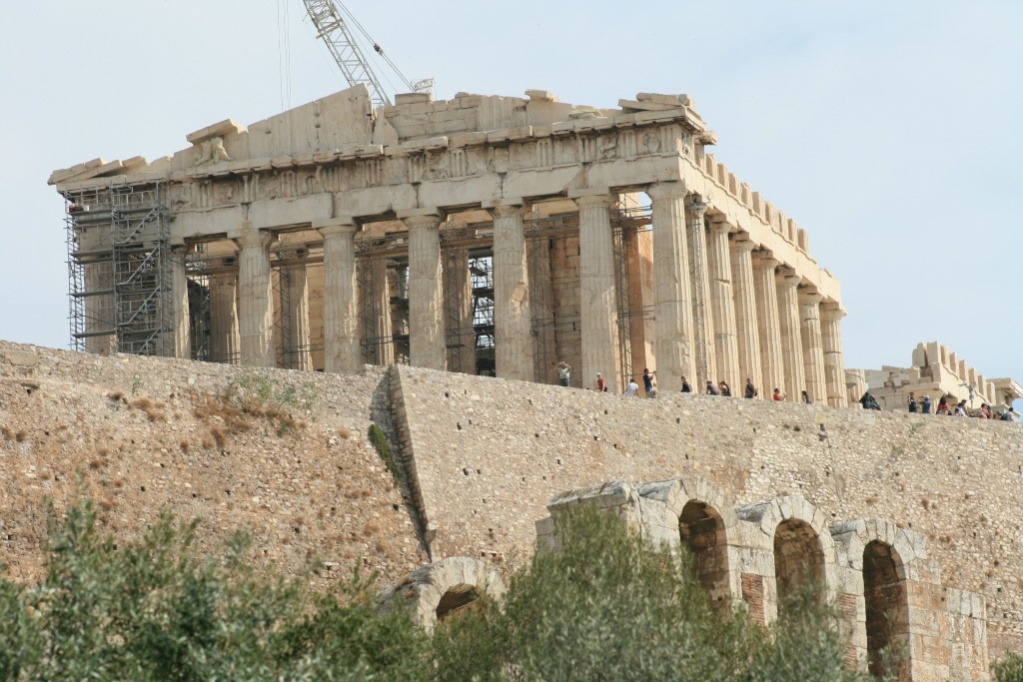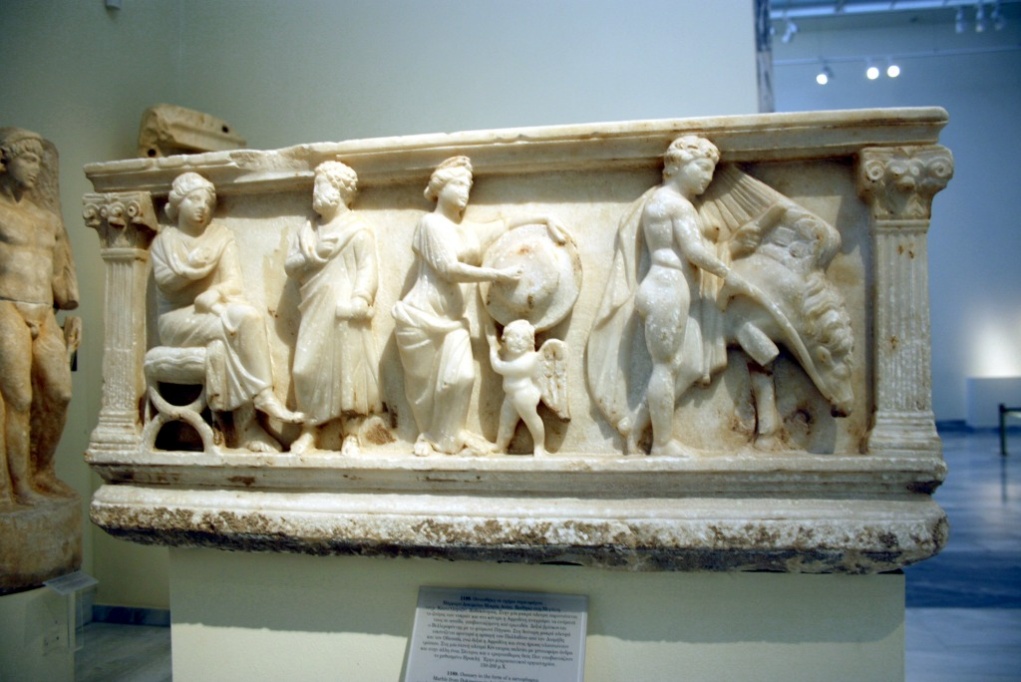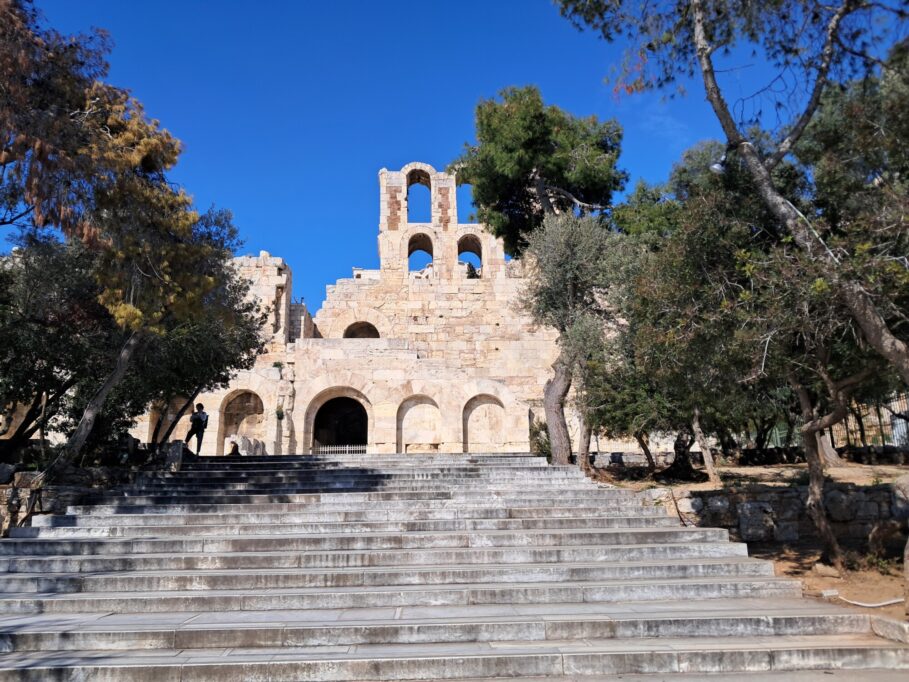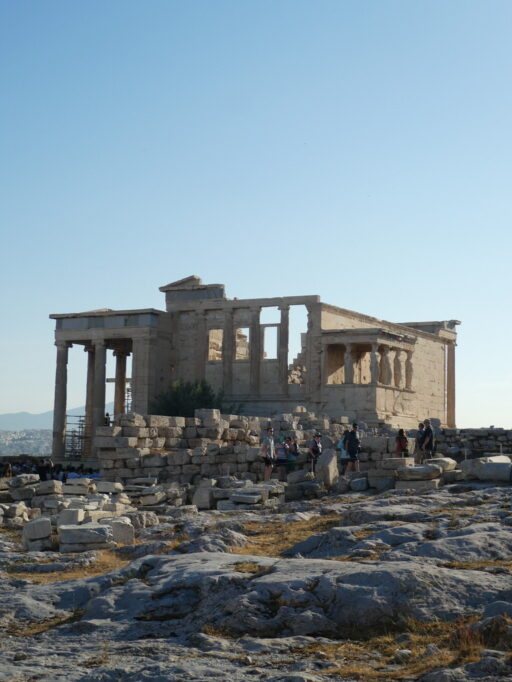Athens Greece Travel Guide A Vagabond Life
Athens, the cradle of Western civilization, invites travelers on a mesmerizing journey through time and culture. As the vibrant heart of Greece, this city is a captivating blend of ancient history and contemporary life, offering an experience like no other.
History: At its core, Athens is a living testament to its illustrious past. It was in this very city that democracy, philosophy, and theatre flourished during the Golden Age of Greece, with luminaries like Pericles, Socrates, and Sophocles shaping the course of human thought. The iconic Acropolis, with its majestic Parthenon, stands proudly atop the city, an enduring symbol of classical Greek civilization. While the history dates back over 3,400 years, Athens continues to evolve, embracing its rich heritage while embracing modernity.
Cultural Riches: Modern Athens seamlessly weaves together antiquity and contemporary life. Explore Plaka’s narrow, winding streets lined with charming neoclassical buildings and traditional tavernas. Immerse yourself in the bustling markets of Monastiraki and witness the changing of the guard at Syntagma Square. The city’s vibrant arts scene, including world-class museums, galleries, and theaters, provides a glimpse into Greece’s creative soul.
Epicurean Delights: Athens tantalizes taste buds with its delectable cuisine. Savor mouthwatering souvlaki, creamy tzatziki, and flaky baklava at local eateries. In the evenings, revel in the convivial atmosphere of the city’s buzzing nightlife, from trendy bars to traditional bouzouki clubs.
Athens, a living museum and a thriving metropolis, promises travelers an extraordinary odyssey through time, culture, and the essence of Greek civilization.
Map Athens Greece: Athens Greece Travel Guide
Getting To Athens Greece: Athens Greece Travel Guide
How to Get to Athens, Greece
Athens, the capital of Greece, is a city steeped in history and culture, offering visitors a wealth of ancient landmarks, vibrant neighborhoods, and delightful culinary experiences. Whether you’re coming from within Europe or from further afield, getting to Athens is straightforward, with several convenient travel options available.
By Air
The most common and convenient way to reach Athens is by air. Athens International Airport (ATH), also known as Eleftherios Venizelos, is well-connected to numerous destinations worldwide.
Steps to Reach Athens by Air:
- Book a Flight: Numerous airlines offer direct flights to Athens from major cities across Europe, the Americas, Asia, and the Middle East. Aegean Airlines, the national carrier, along with major international airlines like Lufthansa, Emirates, and Delta, frequently operate flights to ATH.
- Arrive at Athens Airport: The airport is situated about 20 kilometers east of the city center.
- Transfer to the City Center: From the airport, you can take a taxi, airport bus (X95), or the Metro (Line 3) directly to central Athens. The Metro journey takes about 40 minutes.
By Train
Traveling by train to Athens is an option if you’re coming from neighboring countries or other parts of Greece. Greece’s railway network connects Athens to several major cities and European destinations.
Steps to Reach Athens by Train:
- Book a Train Ticket: Use the TrainOSE website to book tickets from various Greek cities to Athens. International train connections are available but often require transfers.
- Arrive at Larissa Station: Trains to Athens arrive at Larissa Station, which is centrally located and well-connected by the Metro and buses.
By Bus
Buses are a cost-effective way to travel to Athens, especially from within Greece or neighboring Balkan countries.
Steps to Reach Athens by Bus:
- Book a Bus Ticket: Several bus companies operate routes to Athens. From within Greece, KTEL operates long-distance buses connecting Athens with other cities and towns. International buses from countries like Bulgaria, Albania, and North Macedonia also serve Athens.
- Arrive at Kifissos Bus Station: Most long-distance buses arrive at the Kifissos Bus Station. From there, you can take a taxi, local bus, or a short walk to the city center.
By Car
Driving to Athens offers the flexibility to explore the scenic routes and stop at various attractions along the way.
Steps to Reach Athens by Car:
- Plan Your Route: Major highways connect Athens with other Greek cities and neighboring countries. The E75 and E90 are the main routes from northern Greece and other Balkan countries.
- Rent a Car: Car rentals are available at airports and city centers across Greece and neighboring countries.
- Drive to Athens: Follow the highway signs to Athens. Be prepared for city traffic as you approach the capital.
By Ferry
For those traveling from nearby islands or other parts of the Mediterranean, ferries provide a scenic and enjoyable route to Athens.
Steps to Reach Athens by Ferry:
- Book a Ferry Ticket: Ferries to Athens depart from various Greek islands and ports in Italy and Turkey. Tickets can be booked online or at local travel agencies.
- Arrive at Piraeus Port: Ferries dock at Piraeus, Athens’ main port, which is about 12 kilometers from the city center.
- Transfer to the City Center: From Piraeus, you can take a taxi, bus, or the Metro (Line 1) to central Athens. The Metro ride takes about 20 minutes.
Additional Tips
- Best Time to Visit: The best time to visit Athens is during the spring (April to June) and fall (September to October) when the weather is pleasant.
- Visa Requirements: Ensure you have the necessary visa and travel documents before your trip. Check the latest entry requirements for Greece based on your nationality.
- Local Transport: Once in Athens, you can get around using the extensive public transport network, including buses, trams, and the Metro, or by walking, as many attractions are within walking distance of each other.
Getting Around Athens Greece: Athens Greece Travel Guide
Athens Greece Travel Guide – Athens, the vibrant capital of Greece, is a city where ancient history seamlessly blends with modern life. Navigating this bustling metropolis is convenient, thanks to its comprehensive public transportation system, as well as other options like taxis, bikes, and walking. Here’s a guide to help you get around Athens efficiently.
Public Transport
Athens boasts an extensive public transport network that includes buses, trolleys, trams, and the Metro. This system is not only affordable but also covers all major areas of the city, making it easy to reach various attractions.
Metro:
- Overview: The Athens Metro has three lines (Green, Red, and Blue) that connect key locations, including the airport, city center, and major suburbs.
- Key Stops: Syntagma (central square), Monastiraki (historic area), Acropoli (near the Acropolis), and Piraeus (port).
- Tickets: Tickets can be purchased at vending machines in Metro stations. A standard fare ticket is valid for 90 minutes across all public transport modes.
Buses and Trolleys:
- Overview: Buses and electric trolleys operate on an extensive network of routes throughout Athens.
- Tickets: Tickets are the same as those for the Metro and can be bought at kiosks or vending machines. Remember to validate your ticket upon boarding.
Trams:
- Overview: The tram network runs from the city center to the southern suburbs and the coast, providing scenic routes.
- Key Routes: Syntagma to Glyfada and Syntagma to Piraeus.
- Tickets: Use the same tickets as for the Metro and buses.
Taxis
Taxis are a convenient way to travel around Athens, especially for short trips or when public transport is less accessible. They are relatively affordable compared to other European cities.
Tips for Using Taxis:
- Availability: Taxis can be hailed on the street, found at taxi ranks, or booked via phone or mobile apps like Beat.
- Fares: Taxis in Athens use meters. The fare includes a base rate plus a per-kilometer charge. Additional fees may apply for airport trips, luggage, and late-night rides.
- Safety: Always ensure the meter is running, and ask for a receipt at the end of the journey.
Biking
Cycling is becoming increasingly popular in Athens, with more bike lanes and rental options available.
Bike Rentals:
- Rental Services: Several companies offer bike rentals, including traditional bicycles and electric bikes.
- Bike Sharing: Services like Athens by Bike and We Bike Athens offer guided tours and bike rentals.
Cycling Routes:
- Best Areas: Pedestrian-friendly areas like the National Garden, along the Athens Riviera, and the paths around the Acropolis.
- Safety: Always wear a helmet and follow local traffic rules. Be cautious on busy streets where bike lanes may be limited.
Walking
Walking is one of the best ways to explore Athens, especially in the historic city center where many attractions are located close to each other.
Key Walking Areas:
- Plaka: The oldest neighborhood in Athens, with narrow streets, neoclassical architecture, and plenty of cafes and shops.
- Monastiraki: Known for its vibrant flea market, ancient ruins, and lively atmosphere.
- Acropolis and Surroundings: Many of Athens’ ancient sites are within walking distance, including the Parthenon, Ancient Agora, and the Roman Forum.
Tips for Walking:
- Comfortable Footwear: Wear comfortable shoes as you’ll be covering a lot of ground and navigating uneven terrain.
- Stay Hydrated: Carry water, especially during the hot summer months.
Safety: Athens is generally safe, but always be mindful of your belongings and avoid poorly lit areas at night.
Additional Tips
- Ath.ena Card: Consider getting an Ath.ena Card, a rechargeable travel card for convenient access to all public transport.
- Timetables: Check public transport timetables online or use apps like Moovit and Google Maps for real-time updates and route planning.
- Peak Hours: Avoid traveling during peak hours (7-9 AM and 5-7 PM) to escape crowded public transport and heavy traffic.
Navigating Athens is straightforward with its efficient public transport system, plentiful taxis, and walkable historic center. Whether you prefer the speed of the Metro, the convenience of a taxi, or the charm of walking through ancient streets, getting around Athens is an enjoyable part of the experience.
Things To See & Do In Athens Greece Athens: Greece Travel Guide
The Parthenon Athens Greece
Athens Greece Travel Guide – Visiting the Parthenon in Athens, Greece, is a journey into the heart of ancient civilization. This iconic temple, perched majestically atop the Acropolis hill, is a symbol of Greece’s enduring cultural legacy. The Parthenon, dedicated to the goddess Athena, showcases exquisite Doric architecture and intricate marble carvings that have withstood the test of time. It’s a monument that encapsulates the intellectual and artistic brilliance of ancient Greece. Open from 8:00 AM to 8:00 PM during the summer season (April to October) and 8:00 AM to 5:00 PM in the winter (November to March), the Parthenon offers both daytime and evening opportunities for exploration.
To reach the Parthenon, begin your journey in Athens’ historic Plaka neighborhood and follow the well-marked path that ascends to the Acropolis. Alternatively, you can take a taxi or use the city’s efficient public transportation system, including the metro (Line 2 – Red Line) that stops at the Acropolis station. Be sure to wear comfortable shoes for the uphill walk, and consider visiting in the early morning or late afternoon to avoid the midday crowds and heat. As you ascend the sacred hill and arrive at the Parthenon’s monumental entrance, you’ll be transported back in time, connecting with the essence of Greece’s remarkable heritage.
The Acropolis Athens Greece
Visiting the Acropolis in Athens is an awe-inspiring journey back in time, a captivating experience that immerses you in the rich tapestry of ancient Greek history and culture. As you ascend the marble-paved pathway leading to this iconic hilltop citadel, the grandeur of the Parthenon slowly comes into view, casting an imposing silhouette against the backdrop of the clear blue Mediterranean sky. The Acropolis, a UNESCO World Heritage Site, stands as a testament to the architectural genius of the ancient Greeks, with its intricately designed temples, statues, and fortifications. As you explore the ruins of the Erechtheion, the Temple of Hephaestus, and the Odeon of Herodes Atticus, you can’t help but marvel at the level of precision and craftsmanship that went into their construction, even over two millennia ago.
The Acropolis is not merely a collection of ancient structures; it is a place that resonates with the echoes of a bygone era. Standing on its rocky precipice, you can almost feel the presence of the great philosophers, artists, and leaders who once roamed these hallowed grounds. The sweeping panoramic views of Athens below, with its modern cityscape juxtaposed against this ancient marvel, provide a unique perspective on the city’s evolution through the ages. Whether you’re a history enthusiast, an architecture buff, or simply a traveler seeking to immerse yourself in the timeless beauty of the past, a visit to the Acropolis is an unforgettable pilgrimage to the heart of ancient Greece, where history and myth intertwine in the most captivating of ways.


Plaka Athens Athens Greece
Nestled at the foot of the Acropolis in Athens, the Plaka is a charming and historic neighborhood that embodies the essence of Greek culture and hospitality. Stepping into the Plaka feels like entering a time capsule, as its winding cobblestone streets, neoclassical buildings adorned with colorful bougainvillea, and quaint squares exude an old-world charm. The Plaka’s history dates back to ancient times when it was inhabited by wealthy Athenians. Over the centuries, it has been shaped by various civilizations, including the Romans, Byzantines, and Ottomans. Today, it remains a vibrant hub for visitors seeking to explore Greek cuisine, shop for traditional crafts, and soak up the rich tapestry of Athens’ past.
The Plaka boasts a plethora of delightful dining options, each offering a unique taste of Greek gastronomy. Here are the top 5 restaurants that promise an exceptional culinary experience in this historic neighborhood:
Taverna tou Psiri: This cozy taverna is known for its delicious grilled meats, fresh seafood, and traditional Greek dishes. The warm and welcoming atmosphere makes it a favorite among locals and tourists alike.
Stamatopoulos Taverna: With a focus on authentic Greek recipes passed down through generations, Stamatopoulos Taverna serves up mouthwatering dishes like moussaka, souvlaki, and baklava in a rustic setting.
Oinomageiremata: Offering a contemporary twist on classic Greek cuisine, Oinomageiremata is a trendy spot known for its creative dishes, extensive wine list, and rooftop terrace with panoramic views of the Acropolis.
Ta Karamanlidika tou Fani: This deli-style eatery combines traditional Greek cold cuts, cheeses, and mezes with a modern twist. It’s a great place to savor a variety of flavors in a casual, welcoming environment.
Dionysos Zonars: Set against the backdrop of the Acropolis, Dionysos Zonars is an upscale restaurant that serves Mediterranean and Greek dishes in a sophisticated atmosphere. Dining here offers a truly unforgettable experience with a view.
These restaurants, along with the enchanting ambiance of the Plaka, ensure that a visit to this historic neighborhood in Athens is a memorable culinary and cultural journey.
The Plaka is a great place to eat, have a drink and watch the world go by.
Getting to the Plaka: Metro lines 1 and 3 both go to Monastiraki station the best metro stop for the Plaka.
The National Archaeological Museum of Athens Greece: Athens Greece Travel Guide
The National Archaeological Museum in Athens is a cultural treasure trove and one of the most significant museums in Greece, renowned for its extensive collection of ancient artifacts that span thousands of years of history. Located in the Exarchia neighborhood, this museum offers visitors a captivating journey through the rich and diverse heritage of Greece.
The museum’s collection is a testament to Greece’s historical and archaeological significance, featuring over 11,000 exhibits spread across a variety of galleries. Its artifacts encompass a wide range of periods, from the prehistoric era to the classical Greek and Roman periods. The highlights of the museum include an exceptional collection of sculptures, pottery, jewelry, and frescoes from different regions of Greece. One of the most iconic pieces on display is the Antikythera Mechanism, an ancient Greek analog computer that dates back to the 2nd century BC, considered one of the earliest examples of complex scientific instruments.
Visitors to the National Archaeological Museum can explore the evolution of Greek art and civilization, gaining insights into the culture, mythology, and daily life of ancient Greeks. The museum’s exhibits are meticulously curated and presented in a way that provides a comprehensive overview of Greece’s archaeological heritage. It’s an educational and awe-inspiring destination that offers a deeper understanding of the profound influence ancient Greece had on the development of Western civilization.
Address: 28is Oktovriou 44, Athina 106 82, Greece


The Temple of Olympian Zeus Athens Greece
The Temple of Olympian Zeus, located in the heart of Athens, is a colossal testament to the grandeur of ancient Greek architecture and the reverence paid to their gods. Situated at the southeastern edge of the Acropolis, this magnificent temple is an enduring symbol of the city’s rich history and its deep connection to the Olympian gods.
Address: Temple of Olympian Zeus Leof. Vasilissis Olgas, Athina 105 57, Greece
Built over several centuries, the construction of the Temple of Olympian Zeus began in the 6th century BC but was not completed until the reign of Emperor Hadrian in the 2nd century AD, a testament to the sheer scale of this monumental project. Its grandeur is best exemplified by the 17 colossal Corinthian columns that remain standing today, out of an original 104, each towering over 15 meters high.
This temple, dedicated to Zeus, the king of the Greek gods, was intended to be the largest temple in the ancient world. Its sheer size and opulence were meant to showcase the power and prestige of Athens as a major Greek city-state. Although only a fraction of it remains, the Temple of Olympian Zeus serves as a poignant reminder of the architectural marvels of antiquity and the enduring legacy of ancient Greece. Visiting this site provides a unique opportunity to step back in time and marvel at the engineering prowess and cultural significance of the ancient Greeks.
The National Gardens of Athens Greece
The National Gardens of Athens, Greece, offer a serene oasis in the heart of the bustling city. This lush and tranquil escape spans 38 acres and is a green sanctuary teeming with diverse flora, ornate sculptures, and meandering pathways. Originally designed as a royal garden in the 19th century, it is now open to the public, providing a refreshing retreat where visitors can stroll amidst the fragrant Mediterranean plants, admire the neoclassical architecture of the Zappeion Hall, and even encounter tortoises ambling in the shade. The National Gardens serve as both a cultural and natural haven, offering respite from the urban hustle and a glimpse into Athens’ rich history and natural beauty.





